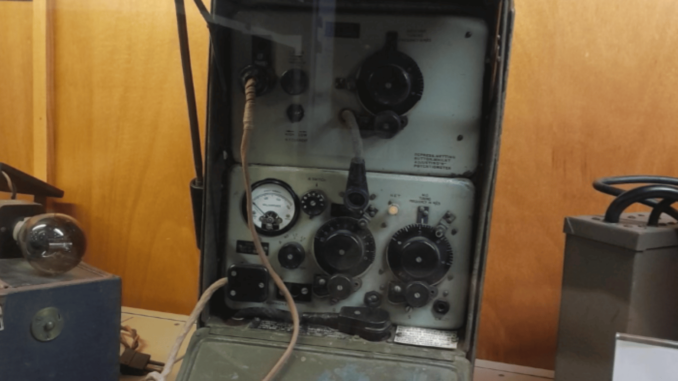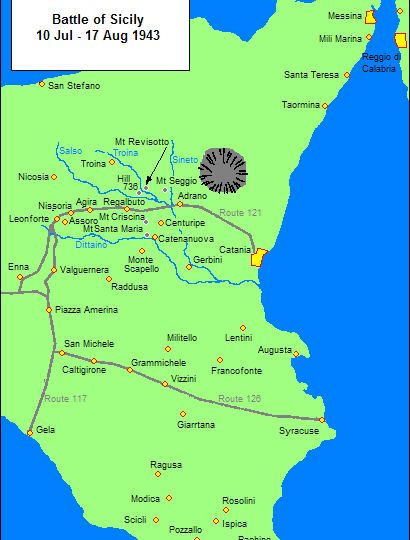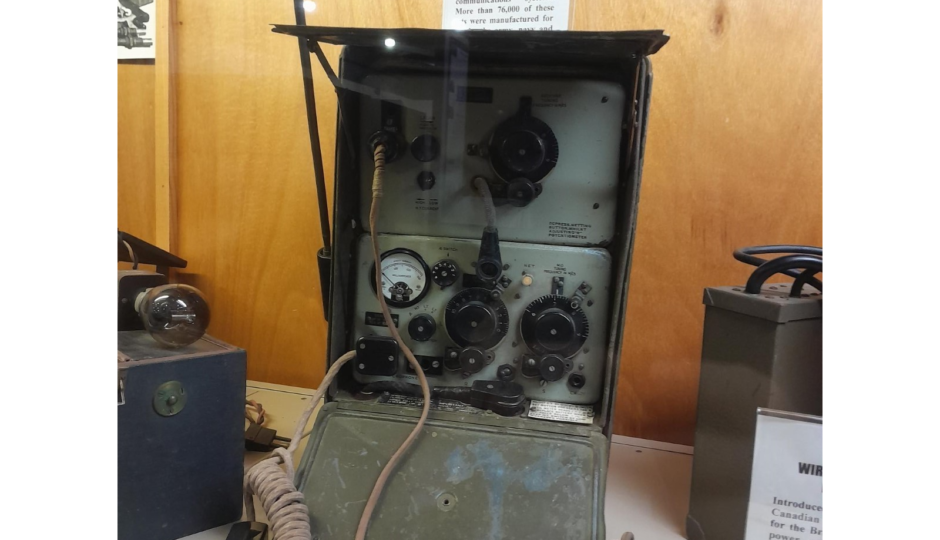
In late June, two assault convoys left the shores of Scotland bound for Sicily. Most of them made it but not all. On July 4 and 5 three merchant / passenger transport ships were attacked by U-boats. All three carried personnel and equipment destined for Sicily.
On July 4, 1943 at 2047 and 2140 hours respectively, the ships City of Venice carrying 302 troops, 700 tons of military equipment, one landing craft and the Saint Essylt carrying 322 troops, 900 tons of military stores and two landing craft (LCT) were struck by torpedoes from U-409 and U-375. Both caught fire and were abandoned and sank the following morning. The City of Venice lost 22 people and Saint Essylt lost 4.
On July 5, 1943 at 1545 the Devis, the Commodore Ship for the Allied Invasion of Sicily with 289 Canadian troops, 4000 tons of government stores and a deck cargo of two landing craft was hit at 15.43 hours by U-593. 52 soldiers were lost and 40 wounded. The ship sank in under 25 minutes.
Also gone with these three ships were most of the vehicles, anti-tank weapons, artillery pieces and signals equipment to support the invasion after landing on the shores of Sicily.
The fast convoy suffered no damage. Signals details on board were ordered to assist naval signallers on the ships as everyone prepared for the assault. Sand tables were on each ship, used for briefing the troops on their objectives- landing successfully on the Pachino Penisula as part of the British 30th Corps on July 10, 1943.

Figure 1: http://www.canadiansoldiers.com/history/campaigns/italiancampaign/battleofsicily.htm
And land successfully they did. Despite having lost their motor vehicles and other equipment, signallers hand carried their wireless sets ashore from the landing crafts through the surf, keeping them dry. While making sure that vital links did not suffer, signallers continued to walk their equipment where needed as the invasion occurred. Divisional Headquarters, with their equipment at the bottom of the sea, could not set up a communication system until July 12. They relied solely on despatch riders for communication. On July 13th, while attempting to set up a formal headquarters, the Divisional Signals was strafed with the loss of 5 soldiers and 7 wounded.

Figure 2 Wireless No 18 set
So quickly was the advance that the campaign was soon out of wireless range and without enough wireless sets and vehicles there was no way to set up a relay. The terrain in Sicily, hot, dry, dusty and mountainous with few trees and fewer roads, was less than ideal for setting up communications of any sort. The wireless sets and the despatch rider were often the only means of communication. And the wireless No. 18 set was not up to the demand of both distance and heat, as the battery chemicals deteriorated in the heat. It did not help that so much equipment had been lost at sea. To support the forward units of each brigade General Simonds of the 1st Canadian Infantry Division commanded that No. 22 sets were loaded on mules and sent forward. The mule would have the No. 22 set loaded on one side and batteries on the other. Often the signaller walked on one side of the mule plugged into his set. Sometimes when things became too “hot” the mule would retreat leaving the operator with microphone and earphones but no set. Mules as well as operators became German targets.
The Canadians saw action at Grammichele and Piazza Armerina, then Valguarnera on 17-18 July, the first true divisional operation of the war for Canadian soldiers. Canadian successes took place took place in the hilly terrain southwest of Mt. Etna from 20-22 Jul, including a surprise night attack by the 1st Brigade at Assoro which was followed by successful defence against persistent counter-attacks, and the capture of Leonforte by the 2nd Brigade. These successes would not have been possible without signallers to repair equipment and hook into existing networks to call in for artillery and infantry support and despatch riders in the areas wireless could not support. The Leonforte-Assoro-Nissoria triangle was cleared by July 27th, 1943 and the ability of the wireless set as a mobile device was secured.
Operation HARDGATE began on 29-30 Jul, intended to open the way for the British 30th Corps, aimed at taking Regalbuto, Centuripe and Adrano. Fighting continued into August 1943.
Karen Young, Museum Manager
